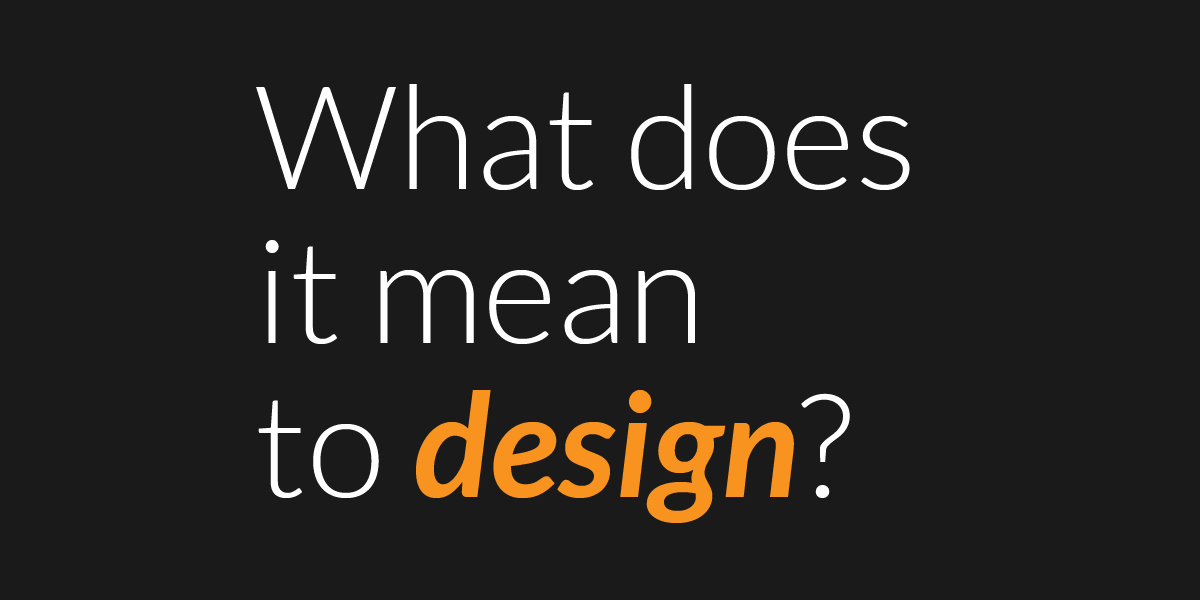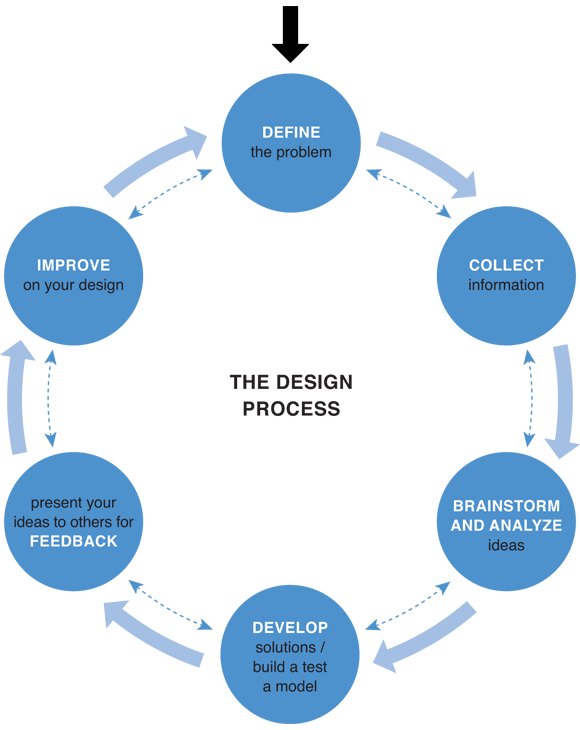Design literacy & developing design thinking skills

Here’s an idea: "Everyone should understand design".
Through Design Thinking anyone can approach the world around us from a fresh perspective. Creative problem solving is enabled by grasping these new perspectives and anticipating future circumstances. But it's not just about anticipating the future, but creating for it.
With the help of a design process we can direct our creativity towards purposeful problem solving. This is why it’s important to understand design not just as a final product, but as a tool or a method that facilitates the inception of creative solutions to problems. Thus, we don’t really want to recognize good design, as much learn the process to design well.
The Design Process
Design is often thought as a mysterious activity that heavily depends on a mythic substance known as creativity.
Sometimes the process is thought to be:
- Grab a problem.
- Tap your creativity to solve the problem.
- Make it happen and get paid or praised.
In turn here's an example of a design process from The Design Process, via www.discoverdesign.org:

So right off the bat, it's not a magical endeavor. Not surprisingly it looks a lot like the scientific method. Like science, design is a lot of work, you don't just "tap your creativity"; instead you define, research, ideate, develop ideas and put them to the test. Getting stuck and having to go back to the beginning is a integral part of this process. Often, the first solution is not the best one and bouncing back to the previous steps is allowed. This allows you to include that failed solution in your research phase and iterate again. It is encouraged to reiterate as much as you need to.
Design is a malleable process. In practice it's natural to develop a design method that accommodates and enhances your studio culture. Product design company Zurb studied their design process and found a better more streamlined way to go about designing their products. Just ensure that even though your process might change, the basics behind the method are still there.
The more designers understand about the nuances of their design process, the better they can communicate with their clients and users. This way designers can explain and include them early on the design process. This early feedback and information can greatly affect your performance and thus the quality of your product. Also, it can help them understand the effort put into the process along with the creativity that results from it.
Being creative
First of all it's not magic. Creativity results from the act of studying people, situations, and objects with wonder for their possibilities and future needs. Embracing the unknown and taking risks is what challenges us and develops our creativity. It's a process filled with hard work and a high chance of failure, but then again who doesn't like a little danger in their life. Adrian Shaughnessy, in his book "How to be a graphic designer, without losing your soul", resumes it like this: "There is no creativity without risk." Good to know.
Design Thinking and new ideas
How do we produce new ideas? This is a controversial topic, some designers won't let anyone question the way they create, and some don't want to be told how to think. But having different ways to understand how to design are great resources to have in your tool belt. It's very useful to know when to switch strategies given a particular project. So, at the risk of sounding patronizing: "knowledge is power".
Shaughnessy explains how Design Thinking can serve to anticipate the new, whether it be circumstances or ideas so we don't rely on existing solutions for new problems. Shaughnessy mentions a Design Observer article called "What is Design Thinking Anyway?" by Roger Martin where he makes a distinction about the "deductive and inductive" process of creating vs. a third "abductive" logic. The former pair of processes produce therefore conclusions, while the latter produces what if conclusions. Creative types can greatly benefit from the ability to identify when to use the inductive, deductive, or "abductive" methods respectively.
Oh and don't forget... Design's a process!
I know there's a LOT more to be said about these topics, but I'm trying to keep lessons concise. Read my references below for extended reading on these topics.
So, I'm interested, how does Design Thinking inform your creative process? Let me know in the comments section below.
I'm on schedule with my posts! To keep informed about new content, you can subscribe to receive a notification whenever I upload a new article. I also invite you to share my blog with anyone that might be interested in the content. Thanks for reading!
Linked Bibliography
Book: Ambrose, Gavin, and Paul Harris. Basics Design 08: Design Thinking. Lausanne: AVA Academia, 2010.
Website: "Design Process." ZURB University. Accessed February 7, 2015."